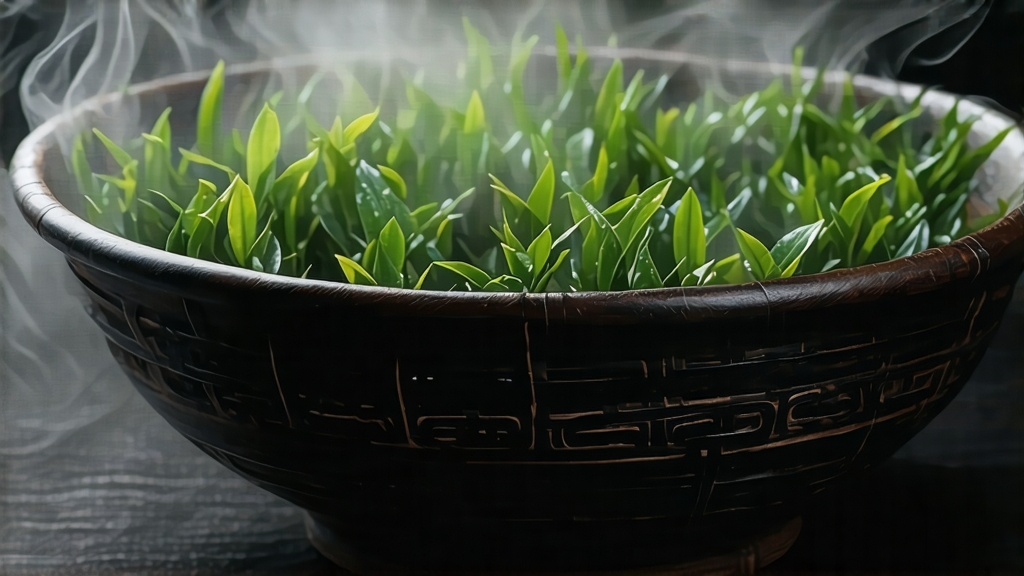
Tucked away in the southern folds of China’s Guangxi Zhuang Autonomous Region, Liu Bao cha has spent four centuries quietly refining its character while its more famous cousin, Pu-er, soaked up the limelight. To the uninitiated, the two teas look almost identical—compressed dark leaves that smell of damp earth and sweet bark—yet Liu Bao carries a subtler, spicier soul, a flavour once described by Qing-dynasty dockworkers as “betel-nose,” the cooling peppery scent that lingers after chewing areca nut. Today, as global drinkers hunt for post-fermented teas that age like Burgundy yet cost less than Bordeaux, Liu Bao is stepping out of the shadows.
History: From River Porters to Imperial Tribute
The story begins in the small town of Liubao, Wuzhou prefecture, where the Wu River meets the Xi Jiang artery that feeds the Pearl River Delta. During the late Ming, local farmers needed a way to keep their summer tea from molding on the long raft journey to Guangzhou. They discovered that piling, steaming, and pressing the leaves into bamboo baskets not only prevented spoilage but also transformed the tea into something darker, smoother, and unexpectedly fragrant. By the Qing Qianlong era (1736–1795), Liu Bao had become one of the “24 tribute teas” carted north to the Forbidden City, favored by the Manchu court for its ability to soothe digestion after heavy mutton banquets. When the British East India Company opened its Canton office, Liu Bao slipped onto clipper ships labeled “black tea,” reaching London docks decades before Assam was even planted. War and revolution later severed export routes, and Liu Bao retreated into domestic obscurity, hoarded by Guangxi coolies who believed it cured rheumatism and “water poison” picked up in the muggy rice paddies.
Varietals: One Name, Many Faces
Modern Liu Bao is classified by four overlapping axes: leaf grade, fermentation depth, compression style, and storage micro-climate. The top leaf grade, “Special Flag” (te ji), contains golden buds that turn russet after fermentation, yielding a liqueur reminiscent of molten toffee. “First Grade” (yi ji) mixes bud and leaf, balancing sweetness and grip, while “Third Grade” (san ji) delivers the earthy backbone beloved by Hong Kong dim-sum restaurants. Fermentation depth ranges from “light” (30–45 days), which preserves a hint of green-tea astringency, to “deep” (70–90 days), where temperatures inside the pile hit 65 °C and the leaf turns chocolate-black. Compression styles include the traditional 40 kg bamboo basket (“da lou”), the 500 g brick (“zhuan cha”), and the travel-friendly 5 g mini tuo. Finally, the tea’s destiny is steered by where it spends the next decade: humid subtropical cellars in Wuzhou produce “wet” Liu Bao with camphor and jujube notes, whereas dehumidified warehouses in Kunming yield a drier, cedar-accented profile.
Craft: From Solar Wilt to Microbial Bloom
Liu Bao’s magic lies in a double fermentation—first enzymatic, then microbial—that begins the moment the leaf is picked in late April. Farmers pluck one bud plus the third and fourth leaves, thicker tissues that feed the bacteria waiting downstream. The leaves are spread on bamboo mats under morning sun for 30 minutes, just long enough to evaporate surface moisture without locking the enzymes. Next comes wok firing at 200 °C for three minutes, a step that kills green-tea grassiness yet keeps the interior alive. While still warm, the leaf is rolled into tight strips, rupturing cell walls so that polyphenols and amino acids can mingle. The strips are then piled 70 cm deep inside cedar-lined rooms, sprinkled with reverse-osmosis water, and covered with jute sacks. Over the next two months the pile is turned every five days, oxygen re-igniting the microbial orchestra dominated by Aspergillus niger, Blastobotrys adeninivorans, and a Guangxi-native strain of Bacillus subtilis that produces the signature “betel-nose” ketones. When the master smells dried longan and wet clay in perfect balance, the pile is broken, steamed, and pressed into baskets lined with fresh bamboo leaves, whose